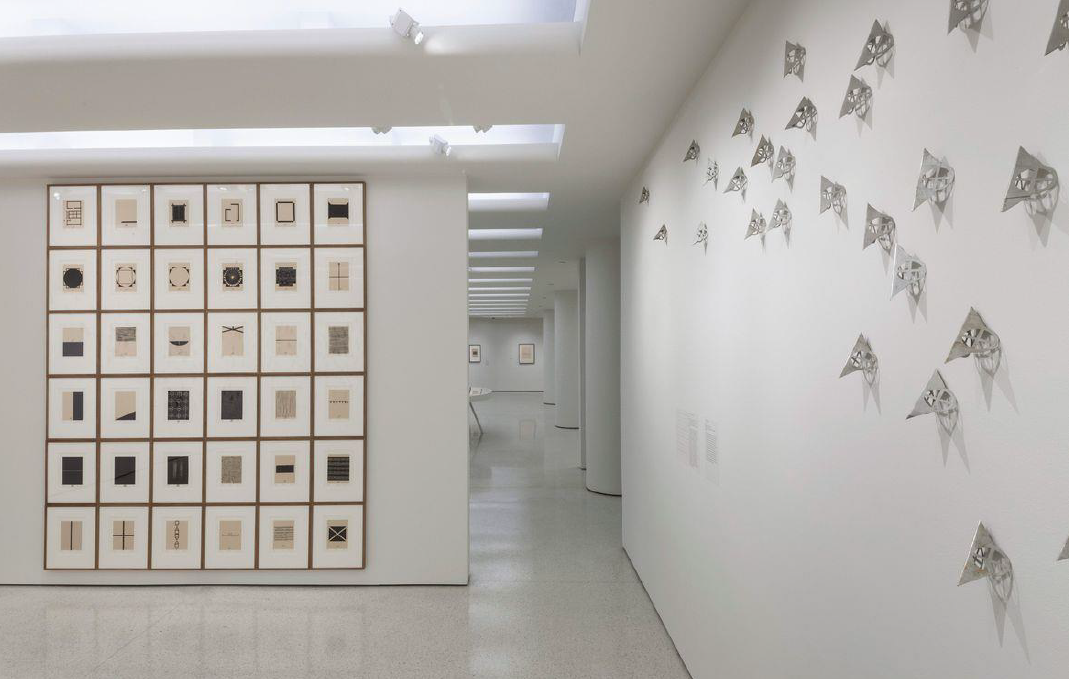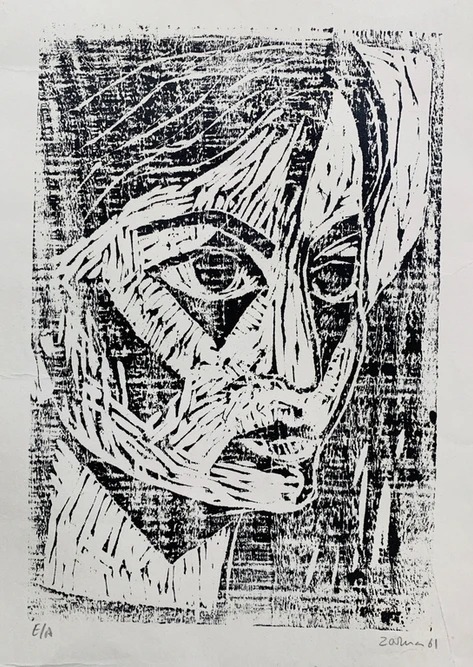Zarina was an Indian-born American artist specializing in printmaking. After completing her degree in mathematics, she went on to study woodblock printing and intaglio, perusing her true passion for the arts. Zarina created her works by utilizing geometry, structure, and texture of paper. Much of her work reflected major milestones in her life, like the independence if India in 1947 which led to the creation of the border between Pakistan and India, and the violence that broke out as a result.
An important theme in Zarina’s work is home. Having left India and living in different countries after marrying her husband, an Indian diplomat, she explored what it meant to have a home, what home really means in the contexts of a feeling of belonging, memories of childhood, and a safe space. Below is a work titled Home is a Foreign Place. It is a simplified floor plan of her childhood home in Aligarh. Each print is a woodcut print, and has the Urdu word for home, ghar, inscribed on the bottom.

There is a sense of sadness or longing in a lot of her work. To me, it seems as if Home is a Foreign Place especially holds a strong sense of forlorn nostalgia. The viewer gets a sense that the woodblocks must have been made from the images that she remembered as a child, like fragments of precious memories. It feels intimate but also with a sense of detachment, like how one would react after seeing that their childhood home has completely changed. The word ghar itself, as the Metropolitan Museum of art notes in their description of the piece, can mean either “home” or “house”, both of which can demarcate different meanings in different contexts.
In 2013, the Guggenheim Museum in New York City held Zarina’s first retrospective exhibition titled Zarina: Paper Like Skin. The museum utilized the rotunda shape of their walls and inner galleries to display Zarina’s work. The museum wrote in a description of the exhibition: “Paper Like Skin presents a survey of the artist’s career that encompasses the autobiographical topographies of distances traveled and time spent, superimposing historical events and personal experiences by way of the elusive, ineffable, yet essential, idea of home.”

I’ve greatly admired Zarina’s artwork for quite some time now. When I first learned of her, I immediately connected with her as both someone of Indian origin and as a woman. I first learned of her work back in 2020, right before her death, at an exhibition on minimalism at the Guggenheim. It was refreshing to see the art of a woman of color being hung next to other big names in minimal and abstract art like Agnes Martin and Park Seo-Bo.
Rest in Peace
July 16, 1937 - April 25, 2020

Post a comment